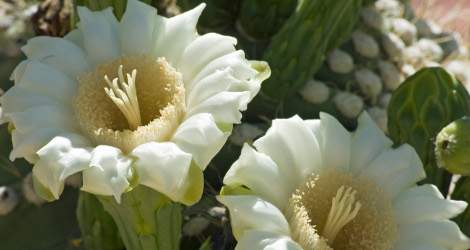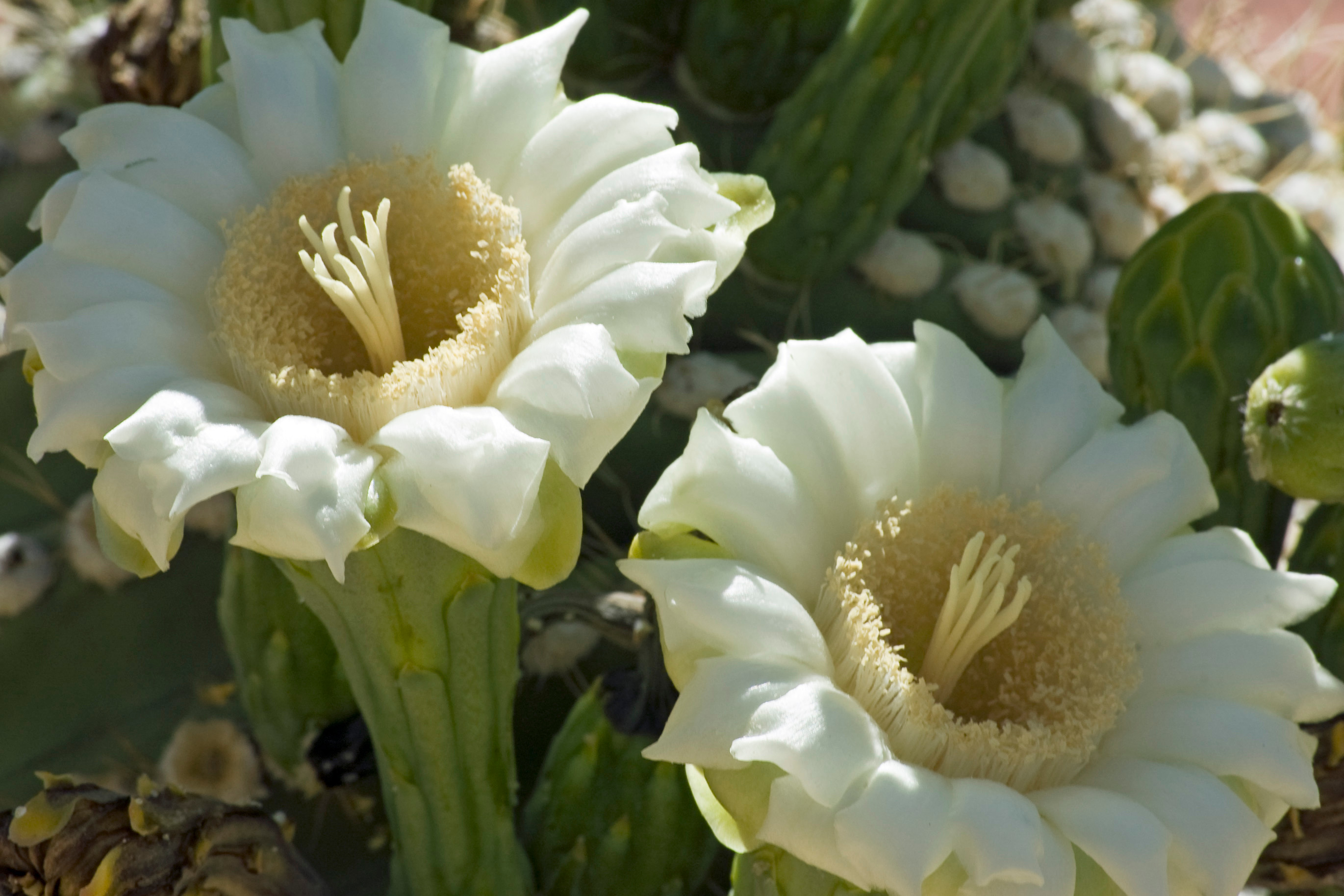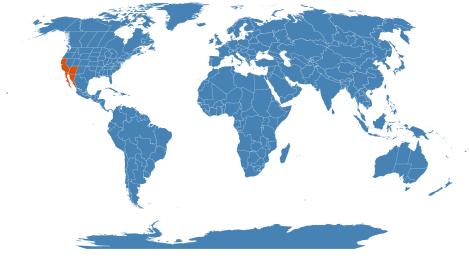Accession Data
Carnegiea gigantea
Common Name: Saguaro
Family: Cactaceae
Synonym(s): Cereus giganteus Engelm.
Country of Origin: Southern Arizona, southeast California and northwest Mexico
Description: Large, columnar, ribbed stem to 60 feet high and 2 feet thick, ribs 12-30; spines 20-25, gray, needle-shaped to awl-shaped, 1/2 to 3 inches long, yellow in upper areoles; flowers white, to 5 inches long, closing next afternoon; fruit oblong, red, to 3 inches in diameter, edible. Spring and summer.
This is the largest member of the Cactaceae and can reach 12 tons in weight and alleged to live more than 200 years. Pollinated by birds and insects by day, bats by night.
Sometimes transplanted from the wild but not thriving in cultivation.
Uses: This plant has been important as a food and drink and is still collected and used in ceremonies.
Accession Data
USDA Zone: 9-11
Accession #: 198502363
Accession Date: 1985-12-31 00:00:00
Bloom Status: 🪴 Not Flowering
Location: 2213
Quantity: 2
Source: Unknown
Culture: In a low-humidity, low-rainfall climate this cactus is suitable for garden or container cultivation, though it is not very easy to grow away from its native climate. Plant in humus-rich, gritty, very well-drained soil in full sun. Propagate from seed or offsets.
Classification
Division: Magnoliophyta
Class: Magnoliopsida
Subclass: core eudicots
Order: Caryophyllales
Family: Cactaceae
SubFamily: Cactoideae
Tribe: Phyllocacteae
SubTribe: Echinocereinae
References
- Hortus Third, LH Bailey Hortorium, 1976
- Botanica, Turner & Wasson, 1997, CD-ROM Version
- Image #00 (cropped) & #01 (original) by Ken Bosma [CC BY 2.0], via Wikimedia Commons. Last accessed on Monday, March 05, 2018.
Images


